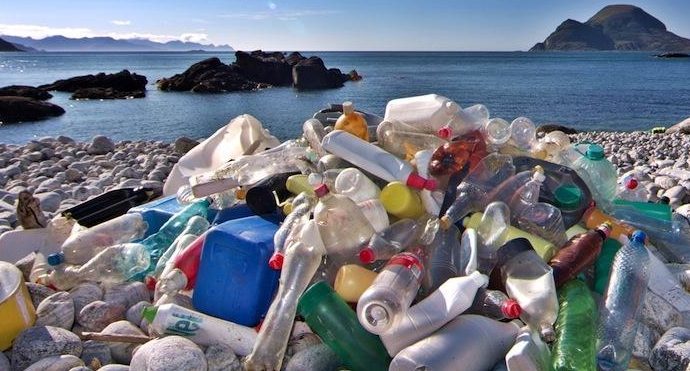Forty five years after one of the most iconic photographs of Earth was taken from space, what lessons can be learned about the future of the planet? Michael Alexander reports.
On December 7 1972, the crew of Apollo 17 – the last manned mission to the Moon – turned their camera back towards Earth and took a photo of our home planet which has become one of the most reproduced images in human history.
The photograph, dubbed The Blue Marble, was taken from the NASA spacecraft five hours and six minutes after launch when it was 29,000 kilometres (18,000 miles) from home.
Extending from the Mediterranean Sea to Antarctica, it was the first time the Apollo trajectory made it possible to photo the South polar ice cap with the entire coastline of Africa clearly visible and the Asian mainland on the horizon towards the north east.
It wasn’t the first or indeed last time astronauts took dramatic pictures showing the humbling fragility of Earth in the infinite blackness of space.
The first time humans truly saw themselves from a distance was on Christmas Eve 1968 when Apollo 8 astronaut William Anders took a picture dubbed ‘Earthrise’ which showed ‘Spaceship Earth’ rising over the Moon.
The picture had such a profound impact it was credited with launching the worldwide environmental movement.
Another of the most profound pictures of Earth – known as the ‘Pale Blue Dot’ – was photographed on February 14 1990 by the Voyager 1 space probe from a record distance of six billion kilometres (3.7 billion miles).
In the photograph, Earth’s apparent size is less than a pixel – the planet appears as a tiny dot against the vastness of space among bands of sunlight scattered by the camera’s optics.
So at a time when our collective existence is threatened by climate change, deforestation, pollution, loss of biodiversity and explosive population growth, what can these humbling, beautiful and inspiring images teach us?
Former NASA Space Shuttle pilot Lieutenant Colonel Duane ‘Digger’ Carey, who recently visited Fife, was the 410th human ever to enter space when he piloted Columbia on what was NASA’s fourth Hubble Space Telescope servicing mission.
The famous Apollo 17 photo helped to inspire him to work towards being a space traveller and also ignited a strong environmental awareness in him which hasn’t waned much to this day.
“I will never forget the first time I saw the Earth from space,” he told The Courier, reflecting on orbiting Earth 165 times and covering 3.9 million miles in over 262 hours.
“As you might well imagine, it was a highly anticipated moment, one that more than lived up to my wildest expectations.
“It was beautiful beyond words, deeply humbling, and was accompanied by a slight sense of danger – would I get a chance to go back?
“I did not bring any reading material, music, or movies to space.
“I did not regret that decision, since every spare moment I had during my 11 day mission was spent at a window, gazing at the Earth.”
Duane said it was interesting to note that several of his friends who have spent months in Low Earth Orbit aboard the International Space Station have told him they never tired of watching the Earth go by at 28,000 kph.
However, he added: “I would say that the most important concept to be gleaned from the “Blue Marble” photograph is one of perspective.
“Our Earth is quite small, really, and, like all such compact living spaces, needs to be kept tidy and healthy. We humans can contribute greatly to her needed care and upkeep.”
Mike Robinson, chief executive of the Perth-based Royal Scottish Geographical Society, said the famous Blue Marble image offered a sense of “human insignificance on a grand scale” in the same way that mountains and seas and raw nature on earth can do.
He added: “I was reminded by one of our speakers, British astronaut Piers Sellers, that people take themselves with them – the pilot on one of his shuttle missions was more concerned with flying a space ship than in enjoying the view out of the window, so this sense of awe does not affect everyone.
“However for those concerned with humanity and the natural world it was a wake-up call to the fragility and isolation of planet earth in space, and a reminder of the need to protect it, spawning much of our modern environmental concern.
“I don’t believe we have ever been truly sustainable as a species and 45 years on we still have a great deal to learn and enact.”
Gina Hanrahan, Acting Head of Policy at WWF Scotland, said: “Blue Marble is one of the most iconic images of all time and was a powerful catalyst for the birth of the environmental movement nearly five decades ago.
“While we’ve made huge progress on many environmental issues over those years, WWF’s Living Planet Index shows an alarming loss of biodiversity of over half since 1970, which will only be accelerated by a warming world.
“Climate change is already affecting nature, people and places on every continent and in every ocean on Earth. The kind of images that are already motivating new generations of people to care about the environment can be found much closer to home.”
Dr Richard Dixon, director of Friends of the Earth Scotland, said: “The Blue Marble image enabled us to step outside ourselves and our immediate surroundings, affording us a global perspective in the truest sense of the word.
“It made visible the finite, closed nature of the system in which we live and how our behaviour should better reflect those boundaries.
“This one image switched on a whole generation of people to the importance of protecting our fragile planet and many of today’s environmental groups owe their early growth to the new perspective created.”
Greenpeace activist and head of media Ben Stewart added: “The famous overview effect has led many astronauts to appreciate the beauty and fragility of Earth in a way that has changed their very perceptions of who we are.
“By taking photographs, they allowed the rest of us to feel a little of what they felt.
“The Earthrise photograph in 1968 is sometimes credited with launching the modern environment movement and Blue Marble had a similar cultural impact.
“I think by looking back at our only home we disabuse ourselves of the notion that humanity is somehow bigger than Earth itself.”
















